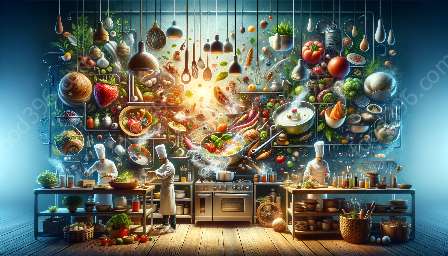Menu Planning and Development Training is an integral aspect of the culinary arts and plays a crucial role in delivering an exceptional dining experience. This comprehensive training equips individuals with the necessary skills and knowledge to design thoughtful and innovative menus that meet the demands of today's diverse and discerning culinary landscape.
Culinary Arts Education and Training
Culinary arts education and training provide a strong foundation for aspiring chefs and culinary professionals. It encompasses a wide range of disciplines, including cooking techniques, kitchen management, food safety, nutrition, and menu planning. By integrating menu planning and development training into culinary arts education, individuals can refine their skills and creativity, preparing them for rewarding careers in the food and hospitality industry.
The Importance of Menu Planning and Development Training
Effective menu planning and development training goes beyond simply compiling a list of dishes. It involves understanding consumer preferences, cultural influences, dietary restrictions, and emerging food trends. By mastering this training, culinary professionals can create menus that delight and satisfy diners while aligning with the culinary philosophy and business objectives of a food establishment.
Key Components of Menu Planning and Development Training
Menu planning and development training covers various essential components, including:
- Market Research: Understanding consumer preferences, demographic trends, and market demands is crucial for creating menus that resonate with the target audience.
- Menu Engineering: Analyzing the profitability and popularity of menu items to optimize the menu mix and maximize revenue.
- Culinary Creativity: Nurturing creativity in developing unique and innovative dishes that showcase culinary skills and appeal to diverse palates.
- Ingredient Sourcing and Sustainability: Focusing on sourcing high-quality, sustainable ingredients to support ethical and environmentally responsible culinary practices.
- Nutritional Considerations: Balancing taste and health by incorporating nutritional elements into menu offerings, catering to the growing demand for healthy dining options.
- Menu Presentation: Understanding the art of menu design and layout to effectively communicate the offerings and enhance the overall dining experience.
Career Opportunities and Advancements
Professionals who undergo menu planning and development training gain access to a wide array of career opportunities, including menu development specialist, executive chef, food and beverage manager, and culinary consultant. These roles not only demand culinary expertise but also require the ability to understand market dynamics and consumer behavior, making the training a valuable asset in career advancement within the culinary arts industry.
Closing Thoughts
In conclusion, menu planning and development training is an indispensable element of culinary arts education and training. By integrating this training into culinary programs, aspiring chefs and culinary professionals can hone their skills in creating appealing, profitable menus that reflect culinary excellence while meeting the diverse needs and expectations of today's diners. Embracing the art of menu planning and development is vital for driving innovation and success in the dynamic world of culinary arts.


